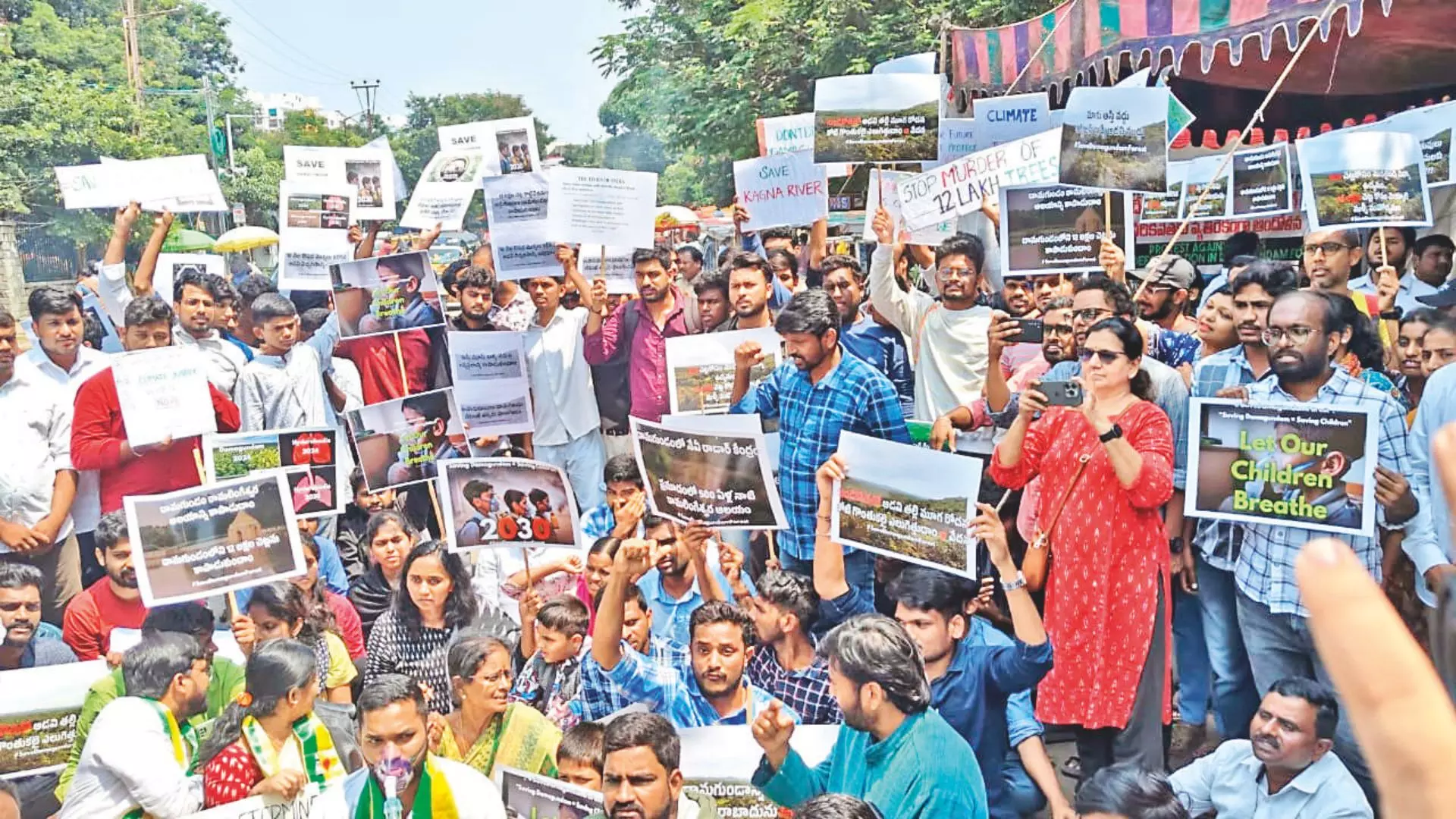Navy sees red over threat to forest

On October 15, as the Indian Navy prepares to lay the foundation stone for a Very Low Frequency (VLF) radar station in the reserved forest of Damagundam at Puduru in Vikarabad district, environmental activists have been rallying to raise awareness about the project’s ecological impact.
While the number of trees being cut to build the station remained a subject of speculation over the last month, the Navy has made it clear that only 899 trees are being cleared for the project. Speaking to Deccan Chronicle, Captain GM Rao, officer-in-charge of project implementation and management team, says: “We have conducted Grama Sabhas in the area since 2011 and have acquired the approval for the project. Widespread reports suggest that the project is cutting 12 lakh trees. However, the reality is that only 899 trees are being cleared for the project.”
cutting edge
After facing resistance for 10 years, the Navy received the green signal from the Revanth Reddy government to build the radar station this year. The Telangana government transferred 2,900 acres of forest land to the Navy in January to construct this facility.
Environmentalists have opposed the project due to the potential ecological damage it could cause to the area. Despite the government’s directive to build the facility in accordance with all environmental norms, activists argue that such damage is largely irreparable.
K.B. Dharma Prakash, an activist from Jana Vignana Vedika, says: “A few of our activists visited the site and found that the construction of a compound wall has started already. It has now become a delicate issue. On the one hand, we acknowledge the paramount importance of ensuring our country’s security. However, cutting off so many trees will have a lasting ecological impact on the region. Despite the government’s pledge to replace the lost trees with new ones, the effort falls short. A forest takes thousands of years to grow. Every tree is an ecosystem.”
Appeal To Rescind Decision
Another reason the project faced stiff opposition was the fact that the Musi River originates in this forest.The National Alliance of People’s Movement argued in a letter to the chief minister, Revanth Reddy, that the mass cutting of these trees will affect the river basin through soil erosion. The letter stated that this area serves as a catchment zone, and destroying the forest could result in more frequent flooding in Hyderabad.
Ram K Challa, a lawyer who has been fighting to save the forests, said that the Navy should look for an alternative site.
“At the moment, they are building temporary structures for the workers there. The real issue arises when the workers begin to cut down trees. Why do you have to disturb a reserved forest? Is it not possible to find an alternative site? Since the Telangana government has agreed to provide the site, the Navy is building it. I went to the Supreme Court last month and submitted a representation to them to either intervene in the PIL or transfer the petition to the apex court,” says the lawyer.
Balancing Act
Captain Rao says, we are taking the necessary steps to transplant the felled trees. “We contacted Vata Foundation to carry out the translocation for us. Secondly, access to the 400-year-old Ramalingeshwara Swami temple, which is located in the area, was another contentious issue. We are not going to stop anyone from visiting the temple. An annual fair will also be held here,” says the Captain.
As part of compensatory afforestation, the Navy paid the government `74.27 crore in 2017 to plant 11.74 lakh trees around the forest, the Captain clarified. “It’s plausible someone misquoted this figure as the total number of trees cut for the project.”
The Navy also clarified that they are taking all measures to protect Musi River. “It’s a pond near the temple that remains full all year. It is believed that it's the source of Musi that flows subterraneanly towards Hyderabad. We plan to construct a fence surrounding it to prevent any disturbance,” says Rao.
“Around 700 people will be staying inside the facility. Most of it will be built on laterite hilltops, which have no vegetation. We are only using 8.86% of the 2,900 acres to ensure that radiation does not affect human beings, flora, or fauna,” says the Navy officer.

